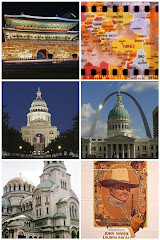Of all the tools, I believe this one is the most important. Our goal as teachers and parents is to ensure that students have the skills necessary to operate in a civil society, whether it is digital or not. Students have to be taught proper behavior in a variety of settings. Proper behavior in the digital realm is just as important to teach.
Three things I believe students need to understand about their digital world are:
1. Students should be able to evaluate sources critically. This was discussed on Cool Cat Blog and in other places. Students need to realize not all sites are equal. Students need to be taught how to evaluate sources, what to look for. It was mentioned in several sites that one practice is to compare what is said on various sites... do they agree? That is one technique, but sometimes in history, you may find a source that disagrees with other historians. On what do they base their views? They should have equally good sources. Maybe there are newly released sources giving a new point of view.
Besides looking at sources, students need to be taught to look for who maintains the site. Learn about the organization or the person. Are they an expert in their field? How much effort did the person/group put into the website? Effort is partly shown in their spelling and grammar.
2. Manners are always important, digital or not. Students need to be taught netiquette, just like we teach them classroom behavior. One way to do this is to be very specific in an assignment... what we will accept and what we will not accept. Providing examples also helps. I used a blog in my history classes this year. I had specific procedures for students to follow when commenting on each other's writings. Students could disagree with each other, but had to do so politely and students needed to give at least one piece of historical information supporting their reason for disagreeing.
3. Fair use is very important. We want students not to plagerize. We need to teach students what constitutes plagerism and how to avoid it. One site talked about writing using hyperlinks. Besides giving credit where information is found, whether by inserting hyperlinks or by referencing, students need to be taught about writing in their own words... just like when I was in school, but instead of using library books and encyclopedias, students now use internet sites. The idea is still the same.
Teaching about fair use can be accomplished through several activities... small group and class discussion about what is fair use v. plagerism. Students and the teacher can present a variety of examples of writing... come "cut & paste" plagerism and others using references with information learned written in one's own words. The class can compare them and discuss how to avoid plagerism.
11 Tools Reflection
15 years ago

No comments:
Post a Comment